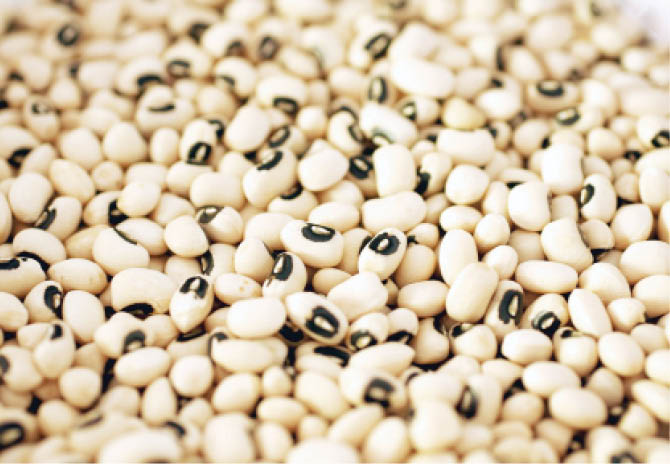They’re a southern staple and commonly cooked on New Year’s day for good luck, but black-eyed peas could also be a widely adopted alternative to nitrogen-based fertilizer in the future.
According to research recently published in the International Journal of Organic Evolution, the legume has the ability to attract nitrogen-fixing bacteria despite being subjected to modern farming activity such as pesticide drift, inbreeding and relaxed selection. This is a significant finding because these elements, or side effects, of contemporary agriculture typically degrade plant systems that draw in soil-enhancing bacteria.
The study, led by scientists at the University of California, Riverside, looked at 20 different varieties of black-eyed peas, both wild and cultivated. They observed these plants’ ability to attract the nitrogen-fixing bacteria called rhizobia through chemicals they emit through their roots. Eventually, the roots of the black-eyed peas grew nodules that protect the bacteria and supply it with carbon. The black-eyed peas, in return, received a fixed form of nitrogen—a necessary nutrient in plant growth.
Scientists suggest planting the black-eyed peas in rotation with other crops to reap the benefits from this symbiotic relationship. The study piggybacks off of the work of agriculturalist George Washington Carver, who studied and preached growing legumes to improve soil health in the 20th century. In modern-day and future farming systems though, researchers say these results provide a genetic foundation for symbiotic abilities. This could eventually help breed better plants beyond normally prized traits such as disease resistance, protein content, taste or appearance.
“To make agriculture more sustainable, one of the things we need to do is focus on the plant’s ability to get services from microbes already in the soil, rather than trying to get those services by dumping chemicals,” says Joel Sachs, UC Riverside professor of evolution and ecology, who also co-authored the paper.
Black-eyed peas emit nitrogen sparingly because it’s based on a reaction of when the plant senses it could die due to low levels of nutrients. Nitrogen fertilizer, in comparison, is often applied at a rate faster than plants are able to use it. This excess amount then often gets washed into waterways, which can amount to a number of health and environmental issues.
For instance, the accumulation of nitrogen in rivers, lakes and oceans fuels harmful algae blooms that use up oxygen and kill fish. This results in dead zones, as observed in the Gulf of Mexico, where no other life is able to survive. High concentration of nitrogen has also posed a threat to drinking water quality, having been linked to serious health problems, notably methemoglobinemia or blue baby syndrome in infants.
So, next time you reach for your chemical fertilizer to give your soil a nitrogen boost, perhaps consider planting black-eyed peas instead.
SOURCE: Modern Farmer

 Join Daily Trust WhatsApp Community For Quick Access To News and Happenings Around You.
Join Daily Trust WhatsApp Community For Quick Access To News and Happenings Around You.


